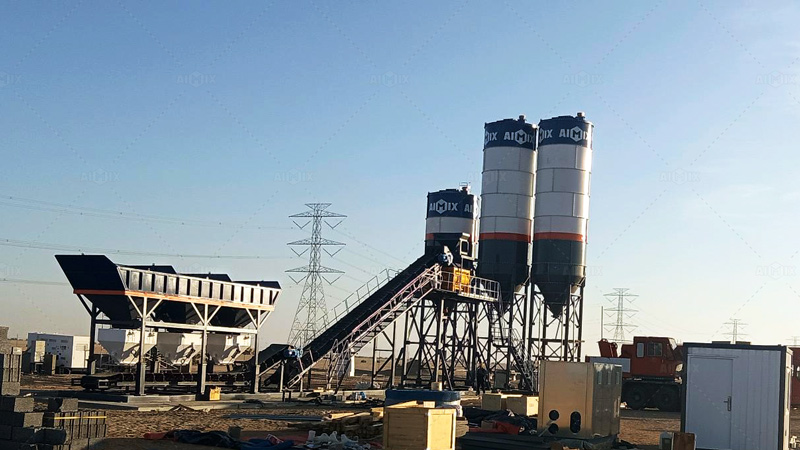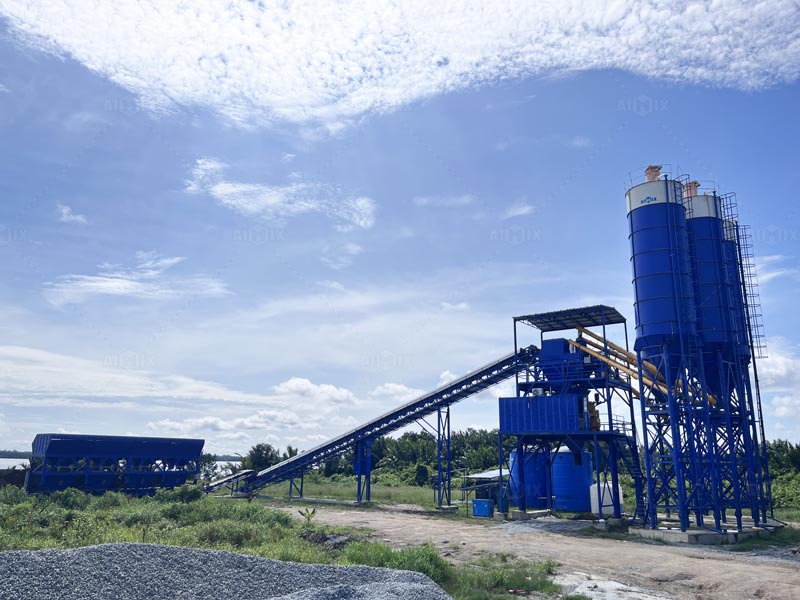Does a Ready-Mix Concrete Plant Need to Use a Water Heater?
The quality of concrete produced by a ready-mix concrete plant can be influenced by many factors, including temperature. In some situations, maintaining the right water temperature during the mixing process is essential for ensuring the desired consistency and strength of the concrete. This article explores whether a water heater is necessary for a ready-mix concrete plant and how it can impact the overall production process.
Contents |
[edit] The Importance of Temperature Control in Concrete Production
[edit] Temperature’s Impact on Concrete Mixture
Concrete is a complex mix of water, cement, aggregates, and sometimes additives. The chemical reaction between the cement and water, known as hydration, generates heat. This reaction is temperature-dependent, meaning the higher the temperature of the water, the faster the reaction occurs. Conversely, cooler temperatures can slow down the setting time and strength development of the concrete.
Maintaining proper temperature control is particularly important when producing ready-mix concrete, as it directly affects the workability, setting time, and durability of the concrete. Without proper temperature management, the concrete may not meet required specifications for different applications.
[edit] Why Do Some Ready-Mix Concrete Plants Use Water Heaters?
Water heaters are used in ready-mix concrete plants(plantas para concreto premezclado) to control the temperature of the water used in mixing. In colder climates, particularly during winter, water temperature can drop significantly, leading to slower hydration rates. This can result in a delay in setting times, which may affect the project timeline.
By using a water heater, a ready-mix concrete plant can ensure that the water is at an optimal temperature, promoting faster hydration and better curing conditions. This is especially important for projects requiring quick turnaround times, such as road construction or large-scale infrastructure projects.
[edit] When Should You Consider Using a Water Heater in Your Ready-Mix Concrete Plant?
[edit] Cold Weather Conditions
In regions where temperatures drop significantly, especially below 5°C (41°F), using a water heater in your ready-mix concrete plant becomes crucial. Cold weather can have a detrimental effect on concrete curing, leading to poor strength development. A water heater ensures that the water is at the ideal temperature for mixing, which accelerates hydration and minimizes the risk of freezing.
[edit] Tight Project Deadlines
When there is a need to ensure that concrete sets quickly, especially in cases where rapid construction is required, such as in paving or large buildings, a water heater can speed up the setting time. It allows the plant to maintain the desired concrete production schedule, reducing delays and avoiding costly downtime.
[edit] Managing Workability and Consistency
Water temperature can also affect the workability of the concrete mix. Cold water can make the mix stiffer and harder to work with, while warm water can improve the fluidity of the mix, making it easier to transport and pour. For a ready-mix concrete plant, consistency in mix design is key, and maintaining an appropriate water temperature can help achieve that.
[edit] Alternatives to Water Heaters for Temperature Control
[edit] Insulating the Water Supply
For some plants, it may not be necessary to invest in a water heater. Instead, water supply lines can be insulated to prevent the temperature from dropping too low, especially if the water is stored in insulated tanks. This can help to keep the water above freezing temperatures in colder climates, without the need for active heating.
[edit] Using Chemical Accelerators
In addition to using heated water, chemical accelerators can be added to the mix to speed up the hydration process. These accelerators are effective at increasing the setting time of the concrete and are often used in conjunction with heated water, especially in situations where rapid strength gain is required.
[edit] Portable Concrete Batching Plant Solutions
For contractors on the move, a portable concrete batching plant(planta dosificadora de concreto portatil) can provide an alternative solution. Portable plants are often designed to be more adaptable to different environmental conditions. Some portable concrete batching plants come equipped with systems to heat water, providing added flexibility to ensure the mix remains workable, regardless of weather conditions.
[edit] Conclusion
A water heater can be a valuable addition to a ready-mix concrete plant, especially when working in colder climates or when quick-setting concrete is required. By ensuring that the water used in mixing is at the optimal temperature, you can enhance the workability, setting time, and final strength of your concrete. However, alternatives such as insulating water lines or using chemical accelerators may also offer viable solutions depending on your plant’s specific needs and operating conditions. Whether you’re working with a traditional ready-mix concrete plant or a portable concrete batching plant, understanding the role of water temperature is key to ensuring high-quality concrete production.
Featured articles and news
RTPI leader to become new CIOB Chief Executive Officer
Dr Victoria Hills MRTPI, FICE to take over after Caroline Gumble’s departure.
Social and affordable housing, a long term plan for delivery
The “Delivering a Decade of Renewal for Social and Affordable Housing” strategy sets out future path.
A change to adoptive architecture
Effects of global weather warming on architectural detailing, material choice and human interaction.
The proposed publicly owned and backed subsidiary of Homes England, to facilitate new homes.
How big is the problem and what can we do to mitigate the effects?
Overheating guidance and tools for building designers
A number of cool guides to help with the heat.
The UK's Modern Industrial Strategy: A 10 year plan
Previous consultation criticism, current key elements and general support with some persisting reservations.
Building Safety Regulator reforms
New roles, new staff and a new fast track service pave the way for a single construction regulator.
Architectural Technologist CPDs and Communications
CIAT CPD… and how you can do it!
Cooling centres and cool spaces
Managing extreme heat in cities by directing the public to places for heat stress relief and water sources.
Winter gardens: A brief history and warm variations
Extending the season with glass in different forms and terms.
Restoring Great Yarmouth's Winter Gardens
Transforming one of the least sustainable constructions imaginable.
Construction Skills Mission Board launch sector drive
Newly formed government and industry collaboration set strategy for recruiting an additional 100,000 construction workers a year.
New Architects Code comes into effect in September 2025
ARB Architects Code of Conduct and Practice available with ongoing consultation regarding guidance.
Welsh Skills Body (Medr) launches ambitious plan
The new skills body brings together funding and regulation of tertiary education and research for the devolved nation.
Paul Gandy FCIOB announced as next CIOB President
Former Tilbury Douglas CEO takes helm.
UK Infrastructure: A 10 Year Strategy. In brief with reactions
With the National Infrastructure and Service Transformation Authority (NISTA).
























